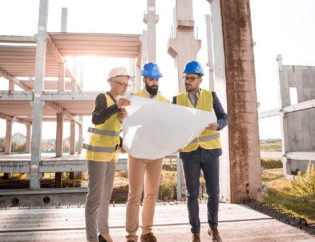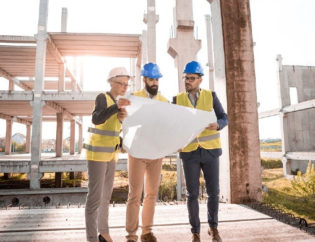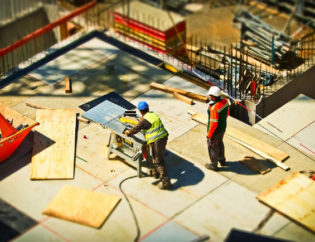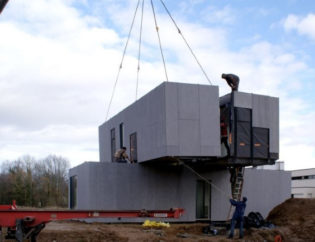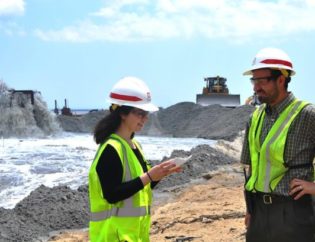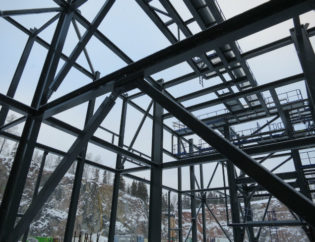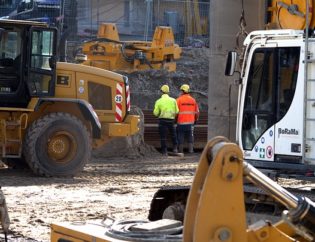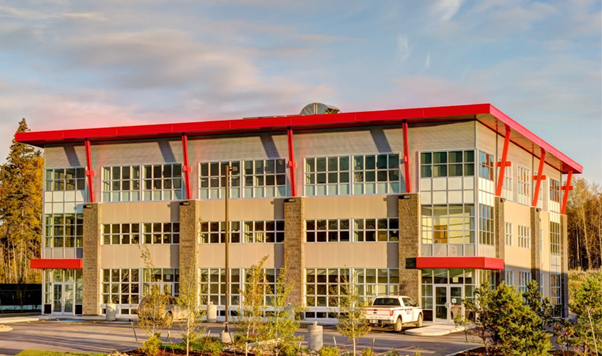
Prefabricated or pre-engineered structures are taking over the commercial, industrial, hospitality, and education sectors. More and more offices and industries are opting this easy and fast method of construction for building their headquarters.
If you are reading this, you already know what prefabrication type of construction is, and are probably considering it for your next project. To help you take the right decision, we have made a list of top merits and pitfalls of this construction type.
Pros of Prefabricated Structures
Faster Construction
Nobody wants to spend unnecessary hours behind anything, and likewise, they try to find ways to cut down on time wastage. For such people (and businesses), prefabricated constructions are ideal. Pre-engineered structures are erected a lot faster than traditionally built structures. The elements or modules of these structures are fabricated in a factory setting, at a single place. Once ready, the components are taken to the site of actual construction and assembled there. This way, the construction is not dependent on factors such as weather and natural calamities. By the time the contractor gets permits and license of the piece of land, engineers can get started with engineering and fabricating components simultaneously. This saves a considerable amount of time.
Energy Efficient Construction Type
Erecting pre-engineered structures can be considered an energy efficient method. And when you choose Cormode & Dickson for your project, you can expect complete efficiency as we believe in our green technology. The most significant feature of this construction method is that all the materials that aren’t used or wasted during the process are put to use again for next prefabrication process. Roughly, about 70%-80% less waste is generated compared to traditional construction, and even that can be recycled and reused. Not only this, but materials used to fabricate the components are free from any chemicals that can harm nature in the future. And because components are prepared in factory settings and then transported to the site, there’s hardly any use of natural resources during the structure erection process.
High-quality Outcome
Only high-quality raw materials such as galvanized steel, structural steel, lumber, and enamel paints are used for engineering and prefabrication process of pre-engineered structures. These high-quality materials are less prone to damages and help the final structure to stand without defects. The components are manufactured indoors under strict and controlled conditions, safe from the rain, wind, and other natural elements. This indoor method of fabrication ensures high standards of quality and safety. Even the plumbing and electrical systems are tested before they are exported to their destinations. This means that there is no question of compromise with quality.
Flexible and Customizable Structures
In case you wish to add a wing or room to your existing pre-engineered structure, it is easily possible with this type of construction. So whether you wish to make an addition by length, height, or width, it can be done quicker than traditional construction. Unlike tradition construction where you have to take measurements, prepare the site adjacent to the structure, and then start constructing, additional components will again be made indoors. Once the components are ready, they will be transported to the destination and attached to the main structure, just like a piece of a Lego puzzle.
Cheaper Process
When compared with the traditional form of construction, prefab construction is much cheaper. Firstly, the process requires less manpower for construction. All it needs is engineers to prefabricate components, and then right professionals to assemble those modules together. Secondly, as the process takes less time, you don’t have to pay the workforce for a long time. Thirdly, the costs of site preparation and heating and cooling of raw materials required are also less compared to the traditional construction method. Basically, you tend to save a lot when you opt for pre-engineered structures.
Cons of Prefabricated Structures
Land Ownership
The biggest pitfall of prefab construction is that you need to own the land you are planning to have your pre-engineered structure on. You can’t build a structure on a rented plot. If you don’t already own land you’ll need to buy it. Getting electricity and plumbing in place can also be a back-breaking task. Not only this, but the final structure will have to comply with the National Building Code of Canada, Canadian Electrical Code (Part 1), National Plumbing Code of Canada, and the applicable provincial, territorial, or municipal codes, and you will have to be mindful of these codes. Securing the land, inspections and permits can add up in terms of cost, time and trouble. Although our prefab construction company will help you with this, it is still a hectic thing to be in charge of.
Financing Issues
In case you are trying to look for financing options such as loans or mortgages to build a pre-engineered structure, you can face a hard time. Not many financing firms are willing to provide loans and mortgages for building or building pre-engineered buildings. While financing and construction loans are available for many prefab structures, you’ll need to pay for its construction beforehand. But if you can afford the cost of paying the deposit amount upfront, this won’t be an issue for you.
As you can see, there are more merits than demerits of pre-engineered structures. Another advantage of this construction type is that it doesn’t disturb people living or working around the site. In other types of construction, people have to tolerate undesired noises. Furthermore, pre-engineered structures made of steel and lumber are lighter compared to those made from bricks, concrete, cement, and other conventional materials. All these merits collectively make up for those demerits. Thus, the conclusion is clear; pre-engineered structures are ideal for industrial and commercial applications.
If you think that finding the right repairers for pre-engineered structures is difficult, it’s not the case. Our prefab structure builders are just a call away in case there’s any need for repair or improvement in the future.
